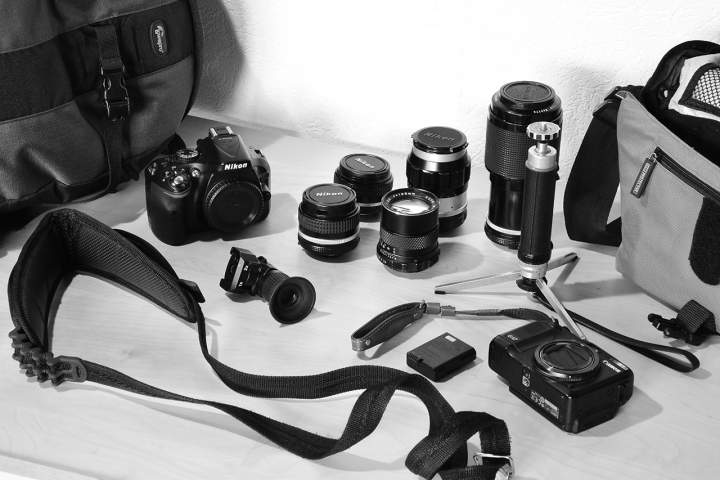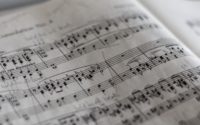Old Nikkor Lens – My comparison with modern lenses
The following is my opinion and experiences with old Nikkor lenses compared with newer modern lenses. I realise that what I do may not be something you can do, want to do or see value doing. I hope that from my experience you can decide for yourself what would work best. Alex.,
 I currently have 4 older Nikkor manual metal lenses and each is an engineering masterpiece. The glass, the metal milling and the smooth operation feel just right, as lenses should. Solid, well made, compact and quality sum them up rather well.
I currently have 4 older Nikkor manual metal lenses and each is an engineering masterpiece. The glass, the metal milling and the smooth operation feel just right, as lenses should. Solid, well made, compact and quality sum them up rather well.
Optically I have no “technical” basis for measurement, but as an artist the optical properties are just perfect for me. I feel that the lenses were designed for a time when the camera and lens was an extension of the photographer and not simply a tool that would make all the decisions. The ergonomic aspects of control should not be ignored either.
By comparison, today’s plastic battery hungry lenses are packed with acronym’d “features” which seem only to contribute to the price tag rather than the artistic support to the artist.
As a practical and pragmatic example: I tested the 18-105mm DX kit lens that I got with the Nikon D5200. I set the kit lens to the similar field of view to the 28mm and tested with image stabilisation off and tested the same picture with the Ais 28mm f 3.5, which has no image stabilisation. The Ais lens delivered good results where the kit lens did not. I concluded that the image stabilisation “off” only served to persuade the user that image stabilisation was worth paying for… However, I’m beginning to think it might be necessary only BECAUSE the lens is automatic.
Costly features of plastic lenses.
Image stabilisation because of auto focus?
I feel that with automatic lenses, the focus motor gives the lens an epileptic fit and the image stabilisation tries to hold the optics down and put a stick between its teeth! Perhaps a technical version of medication needed to compensate for side effects of other medication?
Auto Focus helps. Really?
When I photograph street, events or even impromptu portraits the one thing I don’t do is pack my subject dead in the middle of the picture, nor are they necessarily the closest thing to me. In many cases the cameras best guess as to what is my intended subject can be thrown well and truly off target.
Auto focus is great when the subject meets the criteria for the cameras logic, but that makes for unimaginative and sometimes over sterilised imagery.
Also composing a street scene with a moving subject and auto focus means that the scene that is photographed can’t be composed at the same time as the person being kept in focus for that “magic moment” when everything comes together. With manual I can compose the shot, hold that composition, keep focus on the moving subject and take the shot when the time comes.
The plastic lenses drain power.
Image stabilisation, auto focus and the control of the aperture all take power. Half pressing to check the exposure with manual lenses, just checks exposure.
Taking a shot with automated lenses needs the focus motor, movement of the aperture blades and the image stabilisation computationally and physically active… All this is battery hungry!
On the Nikon D5200 I was getting approximately twice as many images per battery charge with manual lenses as opposed to the automated plastic kit lens.
The older lenses have the edge on this point… at least in my view.
Heavier, in all the wrong dimensions.
Glass needs to be where it needs to be, but since automation it has changed. Many of the modern lenses seem to push the glass further from the camera body, either to make space or to allow operation of the auto focus mechanism or system. This leads to a rather clumsy balancing act for every shot. Not to mention the extra bulk and volume that must be kept safe in crowds or when travelling.
A simple comparison of the Nikkor 35mm f1.8 G FX and the Nikkor 35mm f1.4 AI-s shows that the newer autofocus is bigger and longer despite being only f1.8 as opposed to f1.4. I therefore have to conclude the automation makes the glass design different and the whole resulting package of newer lenses more massive. Perhaps we pay by volume and not by quality today…?
The older lenses have the edge on this point… at least in my view.
The spinning focus.
One aspect of the modern lenses that is a direct consequence of auto focus is the spinning manual focus ring. Whilst new photographers will consider auto focus as essential and probably avoid manual focus like the plague, this misses the benefits of manual. Ignoring this misnomer, the fact that the manual Nikkor lenses stop at closest focus and stop at infinity makes manual focus ergonomically easy.
Clearly if I want to force auto focus to be adopted I will make manual focus with newer lenses theoretically possible, but far less ergonomic. In addition I can remove the manual focus split screen or prism system in the camera too. Two things that the mainstream consumer camera manufacturers have done! It’s worth noting Leica still has calibrated focus and optical focus assistance…!?!? (BTW to those that don’t know old manual film cameras, the green dot with or without arrows is not the same!)
The “feel” of the lens is as much the feel for the subject’s distance and the amount of turn needed from one of the end stops. And preempting and preparing focus using such manual lenses becomes actually more efficient than the back and forth as the automation hunts for the moving target.
It is, at least for me, an impossible task to take the modern lenses and quickly preempt or prepare the focus in advance in manual mode. This aspect can be critical for street photography, event photography or candid portraiture.
The older lenses have the edge on this point… at least in my view.
Low light auto focus.
Auto focus needs a certain amount of light, the human eye can work with far less.
The older lenses have the edge on this point… at least in my view.
Price and value for money.
Legacy lenses from Russia were at one time considered the most affordable solution, but today Nikon Nikkor Ais lenses, that were the professional lenses of yesteryear, are affordable too.
Over the years I have picked up a Nikkor-Q 135mm f 3.5 converted for €49, Nikkor Ais 28mm f3.5 for €99, Nikkor Ais 50mm f 1.8 for €99 and a Nikkor 80-200mm f4 for €49. None of these prices come close to reflecting the optical quality, hand calibration or engineering excellence that the lenses embody.
Canon almost certainly has similar quality and prices, I just don’t have personal experience.
The older lenses have the edge on this point… at least in my view.
Optical Feel of old Nikkor lenses
In both Black and White and Colour the older lenses are somehow different and better. I can’t describe it, I can only show it…
Both images are jpeg from camera. No editing, no filters no nothing!
The older lenses have the edge on this point… at least in my view.
I have several videos which show some of the results with older lenses. Below are a few.
- My Takes and My Take! – Events and Portraits
- VIDEO: Travel #26 – Bad Reichenhall & Salt Works (+ some street)
- KIT: Using Legacy Lenses: Best lens I have ever used…
So do I/we ever use auto focus lenses?
Yes I do. The AFS 35mm f 1.8 is used for event photography where I need to be capturing scenes. But even at the rock concert event I photographed, I still found that the manual Ais lenses were the “go to” solution for the best images. The idea that people can’t focus quickly enough, and automation wins, ignores the fact that professionals delivered good images before automation. So automation really needs to provide something extra to compensate for all the losses; which it just doesn’t seem to do.
Karen uses automation in the high stress situation of events. She uses the DX 17-50mm (25-75mm) f 2.8 Sigma (approx €500 new) on the Nikon D3300 (€149 shop demo); a combination that is exceptionally good. Optically and ergonomically this little “mix and match” is a really good basic setup for event photography. Even in relatively low light with higher ISO it has delivered very decent results. So I’m not adverse to automatic, totally!
My summary.
So all the downsides of automation are really the upsides of manual quality lenses of yesteryear. If the modern manufacturers have us spending money on compromises with nice labels and not paying the high prices for the quality of workmanship; we probably need to wait until they change.
So if we want better glass without the silly prices the only option is to stick with the older proven working tools that don’t carry the “downsides”. Until of course something genuinely better is available.
Good glass does not go bad, there is certainly no use by date.
There are sufficient photographers that understand this as Japancamerahunter.com shows. There is a serious revival of both film cameras and the older lenses. Well I find film costly, but the lenses are still the best. JCH are probably not going to get you the prices I paid, but in my quest I have purchased damaged and useless lenses in building my personal collection. With JCH I am sure you will pay for a perfectly working lens in the condition described and you will not waste your time or money.
Will the mainstream camera companies fix this?
I don’t think so.
They have spent too long persuading the marketplace that automation is essential and they get extra points on the price tag for every acronym they add.
Only Leica maintains the philosophy that the photographer makes the image and they are fighting a communication battle against the profitable misnomers of mainstream camera companies.
Nikon digital cameras together with the older Ais lenses, or perhaps Canon with their older lenses, constitutes a Leica style philosophy with a price tag that most can afford.
After all engaging with photography is what most of us are trying to achieve, even when we can’t afford a Leica!
Alex.,





